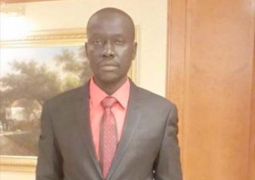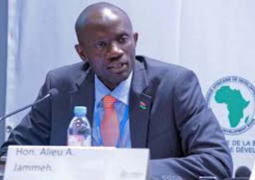What is Obstetric Fistula?
Obstetric fistula is an injury of childbearing that has been relatively neglected, despite the devastating impact it has on the lives of girls and women. It is usually caused by several days of obstructed labour, without timely medical intervention - typically a Caesarean section to relieve the pressure. The consequences of fistula are life shattering. The baby usually dies, and the woman is left with chronic incontinence. Because of her inability to control her flow of urine or faeces, she is often abandoned or neglected by her husband and family and ostracized by her community. Without treatment, her prospects for work and family life are greatly diminished, and she is often left to rely on charity.
How does fistula occur?
Unattended
obstructed labour can last for up to
Why does it occur?
Fistula occurs when emergency obstetric care is not available to women who develop complications during childbirth. This is why wDfTlen living in remote rural areas with the I ittle access to medical care are at risk. Before the medical advances of the 20th Century, fistula was the quite common in Europe and the United States. Today, fistula is almost unheard of in high-income countries, or in countries where obstetric care is widely available.
Poverty, malnutrition, poor health services, early childbearing and gender discrimination are interlinked root causes of obstetric fistula. Poverty is the main social risk factor because it is associated with early marriage and malnutrition and because poverty reduces a woman's chances of getting timely obstetric care. Because of their low status in may communities, women often lack the power to choose when to start bearing children or where to give birth. Childbearing before the pelvis is fully developed, as well as malnutrition, small stature and general poor health, are contributing physiological factors to obstructed labour. Older women who have delivered many children are at risk as well.
"Together, we can continue to improve the health & well-being of individuals, families and communities"
Are there other kinds of fistula?
Fistulas, or holes in organs, can occur for various reasons in different part of the body, such as the lungs or digestive tract. Tissue damage resulting from prolonged obstetric labor and resulting in incontinence is called "obstetric fistula". Tissue damage between the bladder and vagina is called vesicovaginal fistula. Rectovaginal fistula, which is less common, refers to damage between the rectum and vagina. Often it the rectum sustains a fistula, the bladder will also have been damaged and a woman will leak both urine and faeces.
The vaginal canal can also be ruptured by violent rape. In 2003, thousands of women in esteem Congo presented themselves for treatment of traumatic fistula caused by systematic, violent gang rape that occurred during the country's five years of war. So many cases have been reported that the destruction of the vagina is considered a war injury and recorded by doctors as a crime or combat.
How widespread is it?
Fistula is most common in poor communities in Sub-Saharan Africa and Asia where access to or use of obstetric care is limited. An estimated two million women remain untreated countries and at least 50,000 to 100,000 new cases occur each year. But good data on fistula prevalence is scarce. Needs assessments conducted as part of the Campaign to End suggest these estimates are far too low.
Why do so few people know about fistula?
Fistula is a relatively hidden problem, largely because it affects the most marginalized members of society: young poor, illiterate women in remote areas. Many never present themselves for treatment. Because they often suffer alone, their terrible injuries may be ignored or misunderstood. The campaign to End Fistula is working to break the silence around this condition and the stigma attached to it.
How can fistula be prevented?
Prevention, rather than treatment, is the key to ending fistula. Making family planning available to all who want to use it would reduce maternal disability and death by at least 20 per cent. Complementing that with skilled attendance at all births and emergency obstetric care for those women who develop complications during delivery would make fistula as rare in the South as it is in the North. These interventions are part ofUNFPA's overall strategy to make motherhood safer. Addressing social issues that contribute to the problem such as early pregnancy, girls education, poverty and women's empowermentare important areas if intervention as well.
"Together, we can continue to improve the health & well-being of individuals, families and communities"
Is treatment available?
Yes, fistula is treatable was well as preventable. Reconstructive surgery can mend the injury, and success rates are as high as 90 per cent for uncomplicated cases. (For complicated cases, the success rate is closer to 60 per cent). Two weeks or more of postoperative care is needed to ensure a successful outcome. Counseling and support are also jmportfnt to address emotional damage and facilitate social reintegration. The average cost of fistula treatment - including surgery, post operative care and rehabilitation support - is $300.
When surgery cannot correct the problem, women undergo a procedure called a urostomy, and they wear a bag to collect their urine. If the surgery is successful, women can resume full and productive lives. They can usually have more children, but Caesarean sections are recommended to prevent a recurrence of fistula. Sadly, most fistula sufferers are neither unaware that treatment is available or cannot access or afford it. In addition, treatment capacity in most areas where fistula is common cannot meet the demand. An estimated two million women with fistula await treatment. The key to ending fistula is preventing it from occurring so this backlog of cases will not continue to grow.
Are there any risks associated with fistula surgery?
As with any surgery, fistula repair does carry some risk. Possible complications of fistula surgery include blockage of the urinary catheter, infection, anuria (absence of urine) and breakdown of repair, most of which can be effectively managed. In rare cases, a patient dies. The documented fatality rate for fistula surgery ranges from 0.5 to I per cent in sub-Saharan Africa. Careful screening and management before surgery is viti, as women with fistula tend to be malnourished and may be more susceptible to disease. Postoperative care and close long-term follow-up to manage both the surgical and medical problems that may occur is also essential.
What is the medical consequences of fistula? ./
Left untreated, fistula can lead to frequent ulcerations and infections, kidney disease and even death. Some women drink as little as possible to avoid leakage and become dehydrated. Damage to the nerves in the legs leaves some women with fistula unable to walk, and after treatment they may need extensive physical rehabilitation. These medical consequences, coupled with social and economic problems, often contribute to a general decline in health and well being that results in early death. Some commit suicide. However, many women with fistula are strong - as demonstrated by their having survived prolonged, traumatic labour - and they can live a long time. Some women have lived with the condition for 40 years or more. "Together, we can continue to improve the health & well-being of individuals, families and communities"
Is there a connection between female genital cutting (FGC) and fistula? ~ Female genital cutting is condemned by most governments because of its consequences on women's reproductive health, and UNFPA is actively working to end the practice. Nevertheless the practice persists in many areas where obstetric fistula is prevalent as well. Although FGC can increase the risk of haemorrhage and infection during childbirth, it is not clear whether it is typically a casual factor in the formation of fistulas. However, two fairly radical forms of FGC, the Gishiri cut, which is practiced in Northern Nigeria, and infibulation, the stitching up of the vagina, can contribute directly to fistulas.
What is the Campaign to End Fistula? .
In 2003, UNFP A a11jl it Partners launched the first-ever global campaign to End Fistula. Its overall goal is to make tlfe condition as rare in the South as it is in the North. This includes interventions to:
Prevent fistula from occurring Treat women who are affected. Renew the hopes and dreams of those who suffer from the condition. This includes bringing it to the attention of policy-makers and communities, thereby reducing the stigma with it, and helping women who have undergone treatment return to full and productive lives.
The Campaign currently covers more than 40oountries in sub-Saharan Africa, Asia and the Arab region in each country, the Campaign proceeds in three phases.
First, needs assessments are undertaken to determine the extent of the problem and the resources to treat fistula. Second, each country that completes a needs assessment receives financial support for planning, including raising awareness of the issue, developing appropriate national strategies and building capacity. Finally, a multi-year implementation phase begins, which interventions to prevent and treat fistula, such as improving obstetric care; training health providers; creating expanding and equipping fistula treatment centres; and helping reintegrate into their communities.
What has the "end fistula Campaign accomplished?
The Campaign, launched in 2003, has already brought fistula to the attention of a wide audience, including the general public, policy-makers, health officials and women with fistula.
"Together, we can continue to improve the health & well-being of individuals, families and communities"
Why is UNFP A spearheading this effort? J
UNFPA's long involvement in programmes to reduce maternal mortality and morbidity make it uniquely qualified to tackle the challenge of fistula. Moreover, fistula touches on nearly every aspects of UNFP A's mandate, including reproductive health and rights, gender equality and empowerment, and adolescent reproductive health. Because of the many factors that contribute directly and indirectly to fistula, addressing this issue can serve as an entry point for overall improvements in women's reproductive health and rights. .At the same time, fistula is a window allowing us to see where reproductive health services are failing to safeguard women's health, especially for the poorest and most vulnerable members of society.
The DoSH in collaboration with UNFP A and the WHO /
In the Gambia, a situation analysis was carried in 2006 to gauge the level of obstetric fistula in the country. The activity included review of records at health facilitie level including the RVTH. Health service providers, traditional birth attendants and heads of training institutions were interviewed. FGDs were also conducted. Among the interviewees were the fistula patients them selves as well..
FINDINGS: ~
. A total of 197 cases were identified which makes the prevalence tobe 0.5/1
000. W . Konwledge about fistula is low-57. I % of female focuse group and
33.3% of male knew about OF Routine surgical services for fistula repair is not
yet available in the Gambia but there is an intermittent fistula repair service
by expartriates in the RVTH. Through RVTH Urolink. The Child Health Advocacy
International (
"Together, we can continue to improve the health & well-being of individuals, families and communities"




